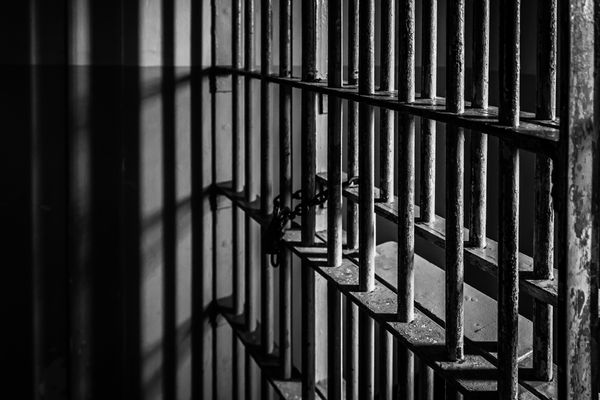3.1.2
Opposition to the Reformation
Opposition to the Reformation
Opposition to the Reformation
Most people accepted the changes, through fear or loyalty. They didn’t see much change in the actual running of the church, as Henry wasn’t a full Protestant and even partially returned to Catholicism in 1539. However, there was some vocal opposition.


Elizabeth Barton
Elizabeth Barton
- Elizabeth was a 16-year-old nun from Kent who had a vision of the Virgin Mary. This was seen as a very special gift from God and she became famous.
- However, she began to claim that God disapproved of Henry’s plans to divorce Catherine of Aragon, and God had said that English bibles should be burnt, people should stay loyal to the Pope and God approved of mass and pilgrimages.
- She met Henry in 1532 and told him that he would die a horrible death if he married Anne Boleyn.


Elizabeth Barton continued
Elizabeth Barton continued
- She was probably exploited by a group of clergymen who opposed Henry’s policies and who had links with Bishop Fisher and Thomas More. They even published a book of Elizabeth’s prophesies.
- In 1533 Elizabeth was arrested and interrogated. Every copy of her book was destroyed, and she was forced to publicly confess that she lied about having visions.
- She was then executed for treason, and on the same day Londoners had to take the Oath of Succession.


John Fisher
John Fisher
- John Fisher was a well-known scholar and had even tutored Henry as a young boy. He was the Catholic Bishop of Rochester.
- He opposed the annulment because he supported Catherine of Aragon as Queen, and believed the Pope’s powers were given by God, so couldn’t be taken by Henry.
- Many agreed with him secretly, but he was the only bishop who refused to change his mind and support Henry.


John Fisher continued
John Fisher continued
- He was charged with treason in 1533 as he was linked to Elizabeth Barton and fined £300. He continued to oppose Henry, even writing to Charles V to ask him to invade England!
- In 1534 he was ordered to take the Oath of Succession but refused. He was taken to the Tower of London and executed, even though the Pope made him a Cardinal to try and dissuade Henry from doing so.
- He was the only bishop executed for opposing the Act of Supremacy.


Thomas More
Thomas More
- Thomas More was a scholar and devout Catholic.
- He became Lord Chancellor in 1529 after Wolsey’s fall, and tried his best to remove Protestantism, even burning six people for their Protestant beliefs.
- He resigned as Lord Chancellor in protest of the Break with Rome, pretending he was too ill to continue rather than admit his opposition to Henry.


Thomas More continued
Thomas More continued
- In 1534 he was ordered to take the Oath of Supremacy but refused.
- He was taken to the Tower of London for a year and continued to refuse to talk about the issue.
- He couldn’t admit that he denied Henry as the Head of the Church in England, as this was treason.
- However, his silence wasn’t enough, and he was executed in 1535, two weeks after Fisher’s death.
1Henry VIII & Wolsey, 1509-1529
1.1Henry VIII & Wolsey, 1509-1529
2Henry VIII & Cromwell, 1529-1540
3The Reformation & its Impact, 1529-1540
3.1The Reformation & its Impact, 1529-1540
3.1.1The Break with Rome
3.1.2Opposition to the Reformation
3.1.3Impact of the Reformation
3.1.4Role of Religious Houses
3.1.5Dissolution of the Monasteries
3.1.6Impact of Dissolution
3.1.7The Pilgrimage of Grace
3.1.8Evaluating the Pilgrimage of Grace
3.1.9End of Topic Test - The Reformation
3.1.10End of Topic Test - The Reformation 2
Jump to other topics
1Henry VIII & Wolsey, 1509-1529
1.1Henry VIII & Wolsey, 1509-1529
2Henry VIII & Cromwell, 1529-1540
3The Reformation & its Impact, 1529-1540
3.1The Reformation & its Impact, 1529-1540
3.1.1The Break with Rome
3.1.2Opposition to the Reformation
3.1.3Impact of the Reformation
3.1.4Role of Religious Houses
3.1.5Dissolution of the Monasteries
3.1.6Impact of Dissolution
3.1.7The Pilgrimage of Grace
3.1.8Evaluating the Pilgrimage of Grace
3.1.9End of Topic Test - The Reformation
3.1.10End of Topic Test - The Reformation 2
Unlock your full potential with Seneca Premium
Unlimited access to 10,000+ open-ended exam questions
Mini-mock exams based on your study history
Unlock 800+ premium courses & e-books